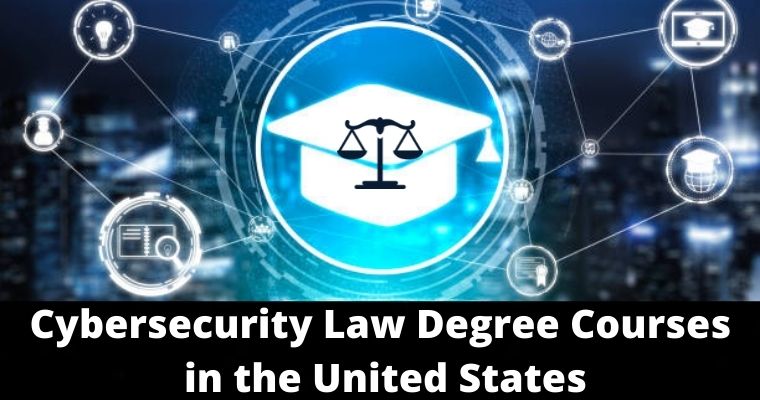Cybersecurity concepts are becoming increasingly important as society becomes increasingly interconnected and as smart technologies continue to advance.
Texas A&M University provides an engineering master’s degree with an emphasis on cybersecurity to meet the demand for engineers who are familiar with the subject.
Table of Contents
Texas A & M University’s Course Details
Texas A & M university‘s Master’s program is a 30-credit hour program. Students who obtain this degree with a cybersecurity emphasis will have to study the following:
- Nine credit hours for three cybersecurity foundational core courses.
- Fifteen credit hours for elective subjects that emphasize focused disciplines. Students will have to pick 5 out of these electives.
- Three credit hours are dedicated to one of the foundational elective subjects.
- Students will be counseled by faculty advisors to select one free elective subject that has to have three credit hours.
- Discipline-specific elective subjects are:
- Computer science
- Computer engineering
- electrical engineering
- Discipline-specific elective subjects are:
Cybersecurity Core, directed electives and foundational electives courses:
Core:
- Foundations of Cybersecurity Engineering
- Computer Network and Security
- Cybersecurity Law and Policy
- Software Security
- Hardware Security
Directive electives
- Data Analytics for Cybersecurity
- Introduction to Modern Cryptography
- Quantum Algorithms
- Software Reverse Engineering
- Advanced Networking and Security
- Cybersecurity Risk
- Professional Internship
- Theory and Applications of Network Coding
- Channel Coding for Communications
- Information Theory
- Unconditionally Secure Electronics
- Cybersecurity Literacy in the Global Arena
- Business Information Security
- IT Security Controls
- Security Management and Compliance
- Information & Secrecy & Authentication I
- Information; Secrecy & and Authentication II
- Issues and methods in Cyber Policy and Cybersecurity
- Introduction to Quantum Computing
- Cybersecurity Policy; Issues; and Operations
Foundational electives
- Object-Oriented Programming, Development, and Software Engineering
- Database Systems with Applications
- Cloud Computing
- Operating Systems and Applications
- Applied Networks and Distributed Processing
- Operating Systems
- Computer Architecture
- Networks and Distributed Computing
- Wireless and Mobile Systems
- Data Mining and Analysis
- Computer Communications and Networking
- Mobile and Wireless Networks
- Microprogrammed Control of Digital Systems
- Wireless Communications
- Digital Integrated Circuit Design
- Microprocessor System Design
Application procedure and deadlines
Applications for fall intake have a deadline of June 1st, and for spring intake, the college follows a deadline of October 1st. Students who want to pursue this degree from Texas A & M university must qualify on the following grounds:
- BSC or MSC with engineering or an equivalent degree
- Minimum GPA 3.0
- Should timely submit the application form on the college’s website with a personal statement stating your reason for going ahead with this particular course. You are also required to mention the relevant academic background and experience in this regard.
- Should timely submit three letters of recommendation from present or past employers or professors.
- A well-versed professional Resume
- GRE test reports. (Note: GRE requirements for the 2021 session have been waived off due to COVID-related reasons)
- Official transcripts from all colleges and universities you have attended in the past
- Proof of English proficiency for non-native students
After going through all the necessary details, prospective students from TAMU can visit this website and fill up their application forms. Students hailing from other universities need to fill up this form.
Application fee
The Engineering CAS processing cost of $58 must be paid in addition to the Texas A&M University application fee of $65. There is a fee of $90 for students from outside the U.S. This price is waived for all U.S. applicants who apply to the College of Engineering.
Your takeaway from this course
- Students will be able to Review and interpret different techniques and strategies for risk assessment and management.
- Students can Contrast federal, state, and international legal and ethical elements of cyber security.
- Students will Compile information on a cyber security professional’s legal and ethical obligations
- They will work with a team of project managers to develop a cybersecurity solution.
- They would be able to Analyse the findings of a vulnerability assessment in order to determine the security state of a network or a machine.
- Students will learn how to function as cybersecurity professionals as they progress through the program.
- This program allows students to integrate advanced computer science courses with cutting-edge cybersecurity technologies and practices.
- Graduates are equipped to safeguard and defend cyber systems with practical learning expertise in wireless security, network security, cryptography, and other disciplines.
Conclusion
To conduct daily business such as transactions and interactions with other parties, government, industry, and consumers are becoming more reliant on protected information systems.
As a result of cyber assaults, telecoms, commerce, utility, data storage, and transportation might be severely disrupted.
To combat these rising cyber threats, we need highly trained and specialized engineers who can lead initiatives to secure our vital infrastructures.
In this high-demand sector, students at TAMU have the opportunity to enhance their careers and make a change.

